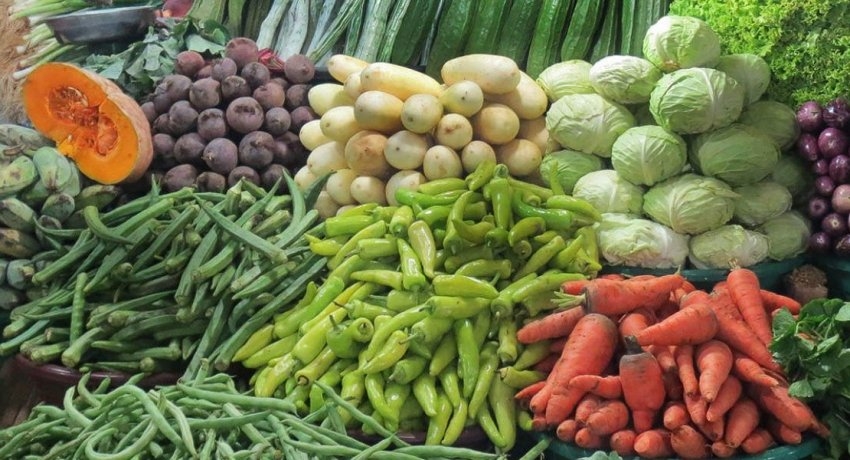For farmers new and old, pricing market produce can be a challenge. You don’t want to overcharge and miss sales, but you also don’t want to charge too little and undervalue your own hard work or undercut your fellow farmers. With these factors in mind, not to mention droughts and low yields, where do you begin?
Below we’ve collected some simple rules for fairly pricing your fruits and vegetables. Follow them consistently and find that your food is paying you back for all the work you put into it.
If you have kept thorough records from the beginning of the season, you can get a good idea of your production cost for a particular item through the following formula: Add up your pre-harvest costs (seeds, tools, labor, etc), divide that by the area used to grow something (acres, square feet, et cetera). Then divide that number by the number of pounds harvested of that item.
If you pay yourself a decent wage for labor, this formula should give you a rough estimate of what it costs you to grow a certain item, and a good idea of the minimum per-pound-price you should charge. In other words, never charge less for a product than what it took you to produce it. Calculate your production cost, then consider the other factors below before landing on a firm sale price.
Because you’re growing the food yourself and picking it by hand, you’re going to charge more for your produce than the supermarket will. Supermarkets often get their food cheaply from large farms, sometimes in other countries, and it’s not usually viable trying to compete dollar for dollar. However, stop and look at supermarket produce prices to determine a baseline cost for each item. If the supermarket sells organic red peppers at $2 per pound, you should feel confident to ask at least that much for your own homegrown peppers. Occasionally, you may be able to charge less and still make a decent profit, in which case it would be worthwhile (and fun) to let the customer know that your prices are cheaper than the supermarket’s.

Consult with Fellow Farmers
It helps to be on good terms with the other members of your market, especially when hoping to price something for what it’s worth. Check other farms’ prices and speak with fellow farmers to avoid extreme price gaps. Keeping your prices in line with others will ensure that they will work with you on pricing and won’t undercut you in the future, effectively helping the profits of both farms.
Some seasons are better than others, but if you are having a dry or particularly rough growing season and your yields are suffering, it might be necessary to consider that in your pricing calculations.
Joe Evans of Paper Crane Farm in Asheville, N.C., said 2013 was a hard year. “Our prices at market reflected that to compensate for some of the losses we had incurred throughout the season,” he says.
Chances are, of course, your fellow local farmers are going through the same issues and a little consultation with them will provide a consensus on a fair and general price for an item.
The USDA’s Agricultural Marketing Service provides a price list for more than 400 fresh fruits, vegetables, nuts, ornamentals and other specialty crops. Their website makes it easy for you to pull up nearly anything you might sell, giving you a good idea of price points at markets around the country. Keep in mind, these prices sometimes vary, and many of them are wholesale prices, so like calculating the price of your produce, other factors should be taken into account before determining a final price.
Pricing at Farmers Market
Where can I find a price list for fruits & vegetables?
The USDA’s Agricultural Marketing Service provides a price list for more than 400 fresh fruits, vegetables, nuts, ornamentals and other specialty crops. Their website makes it easy for you to pull up nearly anything you might sell, giving you a good idea of price points at markets around the country.
What is selected weekly Fresh-Market vegetables movement and price?
Selected Weekly Fresh-Market Vegetable Movement and Price describes the change in shipment volume, farm prices, and retail prices of select vegetables from May 2, 2020 until the last updated date noted.
How often are ERS fruit and vegetable prices updated?
ERS fruit and vegetable prices are updated periodically to coincide with the release of each version of the Dietary Guidelines for Americans. When generating estimates using 2013, 2016, 2020 data, ERS researchers priced similar fruit and vegetable products each year.
How do I find a fair price for food?
Chances are, of course, your fellow local farmers are going through the same issues and a little consultation with them will provide a consensus on a fair and general price for an item. The USDA’s Agricultural Marketing Service provides a price list for more than 400 fresh fruits, vegetables, nuts, ornamentals and other specialty crops.
